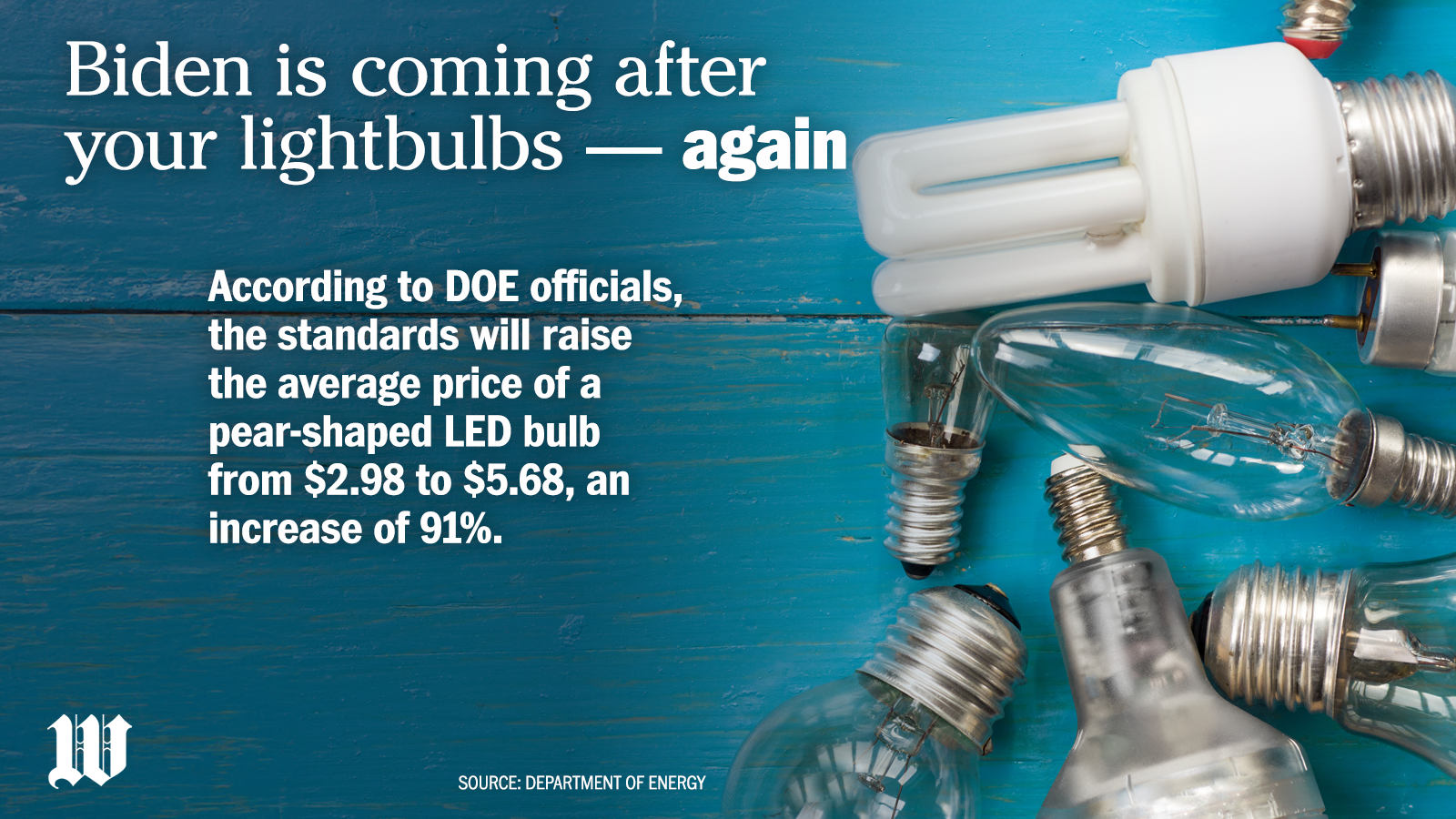The Biden administration, which banned incandescent light bulbs last year, is now targeting LED bulbs to promote “a significant leap” in energy efficiency, but such a prohibition would nearly double the price of bulbs and eliminate consumers’ lighting choices.
Half of U.S. households use bulbs with LEDs, or light-emitting diodes. The number of households relying on LED lighting is projected to increase now that the Biden administration has banned incandescent bulbs and is phasing out the pigtailed compact fluorescent light bulbs, which cost less than LEDs but contain mercury.
The Department of Energy is trying to squeeze more energy savings out of the remaining bulbs on the market by imposing standards that industry experts say will be tough to meet.
The department announced that bulb manufacturers must nearly triple the number of LED lumens per watt from 45 to 120 by July 2028.
Energy Department officials said the move will save energy and reduce carbon emissions, a top priority for President Biden.
The department calculates $27 billion in savings on American utility bills and 70 million metric tons less carbon dioxide emissions over 30 years, equivalent to the combined annual emissions of more than 9 million homes.
The Energy Department projects that its new standard will cut light bulb energy use by 17% over three decades.
Critics say the LED squeeze is another Biden administration move to overregulate home appliances. Orders from the federal government have cut energy use sharply over the past two decades.
The Biden administration has further increased appliance regulations to meet the president’s goal of achieving a “net zero emissions economy” by 2050.
The administration has taken steps to force manufacturers of stoves, refrigerators, gas furnaces, microwaves, air purifiers, ceiling fans and washers and dryers to improve energy efficiency.
“That’s the problem with these agencies. They make their living cranking out more and more regulations. There’s never going to be a stopping point,” said Ben Lieberman, a former counsel for the House Energy and Commerce Committee who is now a senior fellow at the Competitive Enterprise Institute.
Incandescent bulbs were cheaper than LED bulbs but were considered more expensive over the long haul because they used more energy and burned out faster.
The Biden administration’s ban in August called for a $523 fine per bulb on anyone who makes or sells them.
Mr. Lieberman said most LED bulbs on the market do not meet the looming regulations. Energy Department officials say the standards will raise the average price of a pear-shaped LED bulb from $2.98 to $5.68, an increase of 91%.
Industry publication Inside Lighting called the new standards “a significant leap” in energy efficiency requirements but said they may be formidable for manufacturers of certain types of LED lamps and result in an “increased financial burden” for manufacturers.
The new efficiency standards will forbid an increasingly popular class of LED bulbs that do not emit blue light. Health experts say these bulbs are more soothing for the eyes, promote better sleep and have other health benefits.
Most LED bulbs that do not emit blue light will fall short of 120 lumens per watt.

Dr. Martin Moore-Ede, director of the Circadian Light Research Center, said blue lighting emitted by LEDs, when used at night, can lead to sleep disturbances, obesity, diabetes and cancer.
He advised the Energy Department to make an exception to the standards for blue-free LED bulbs.
“They are just racing out with this standard because they want to show they are reducing energy consumption, but at the cost of human health,” Dr. Moore-Ede said.
In the final rule, Energy Department officials rejected an exception for blue-free LED bulbs. It said the circadian rhythm response to light waves “are not yet fully understood … have not been standardized … and the claim that these lamps provide unique utility is not accurate at this time.”
• Susan Ferrechio can be reached at sferrechio@washingtontimes.com.




Please read our comment policy before commenting.